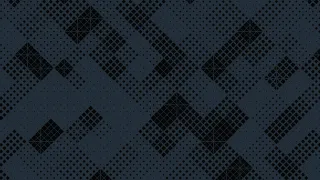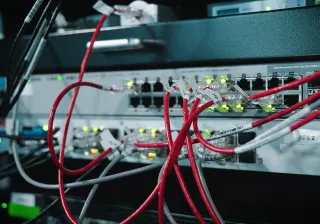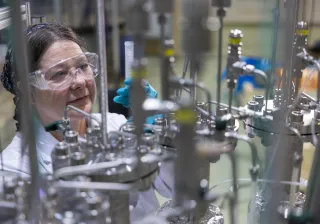VTT has been developing a small radar and is now seeking new application areas for it in the forthcoming Junction Hackathon. We told about the subject in our previous blog post. This time we will delve a little deeper into the opportunities offered by this radar solution. Hopefully these ideas will serve as inspiration for identifying new application areas!
One of the most interesting applications is the monitoring and prediction of vital functions, with the first commercialisation projects already under way, for example, in the form of the LullaMe smart baby crib. However, we are already capable of monitoring vital functions at a significantly higher accuracy than the technology used in the LullaMe solution. At the moment, heart rate and breathing are the key vital functions being monitored. Through heart rate, it is also possible to monitor the heart rate variability and any changes in it, which serve as indicators of recovery and stress level, for example.
One of our research areas in the Junction Hackathon is identifying the activities of an individual at a workstation. Even though in the hackathon the concrete application explored is controlling lights, the same activities could also be used for drawing other kinds of conclusions and taking appropriate measures. The workstation could be dynamically adjusted to best suit the needs of the activity at hand. The employee could also be notified about potentially harmful ergonomics. One dataset we will bring to the hackathon includes information about whether and employee has been sitting in a good or bad position. The same technology could be further extended outside information work to, for example, monitoring the alertness of a full-trailer truck driver.
Instead of radars, cameras could also be used for identifying activities done by people, and pattern recognition could be applied to the analysis of the image provided by them. However, radars have one major advantage over cameras: it is not possible to identify the individuals from a radar image. The protection of privacy is currently very important and will probably come to play an even bigger role in the future. The same advantage also applies to the two other application areas to be explored at the hackathon: counting people in a conference room and counting vehicles in a parking garage.
Radar-based odometry offers significant application opportunities. Radars can be used for positioning purposes without GPS, which is important is such environments as tunnels and cities, where high buildings block the GPS signal. Radar-based positioning provides a more accurate real-time picture than GPS-based positioning, and it is, therefore, extremely important for, say, self-guided vehicles. Today, the navigation systems of autonomous vehicles are based on lasers, but radar would be a more reliable alternative in any weather conditions.
In addition, radar image can be used for building a 3D model from an indoor space that functions very well even in difficult conditions, such as in a room full of smoke. In this kind of application, a robot could first dive into the middle of a fire and provide smoke divers with a model of the building, allowing them to select the best possible routes indoors.
Only the sky’s the limit when brainstorming application areas for radar technologies. In addition, they consume very little power, which is an important matter with a view to future business operations. I believe that the hackathon will give us interesting new ideas and chart some opportunities with potential for further




